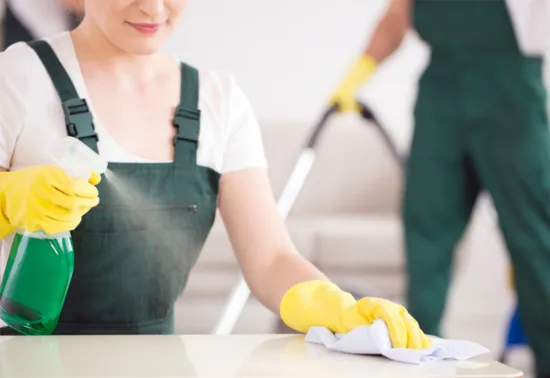
In the wake of life’s most tragic events—natural disasters, violent crimes, unattended deaths, suicides, and traumatic accidents—there is a vital, often invisible profession that steps in to restore order, safety, and dignity: emergency cleanup. Among the most sensitive and vital subcategories of this field are death and body cleanups. These services play a crucial role not just in physical restoration, but also in protecting public health and supporting emotional recovery.
What Is Emergency Cleanup?
Emergency cleanup refers to the specialized cleaning and remediation of environments affected by biohazards, trauma, natural disasters, or other hazardous incidents. Unlike standard cleaning, these services require trained professionals equipped to handle dangerous materials, complex logistics, and emotionally charged situations.
Typical emergency cleanup scenarios include:
- Crime scenes
- Suicides or unattended deaths
- Accidents with significant bodily fluid exposure
- Hoarding situations
- Natural disaster aftermath (e.g., floods, fires, hurricanes)
- Chemical or hazardous waste spills
These situations often contain biological hazards such as bloodborne pathogens, bacteria, viruses, and other contaminants that pose severe risks if not properly addressed.
The Vital Role of Death and Body Cleanups
Among the most intense forms of emergency cleanup are those involving human remains. Whether due to suicide, homicide, accidental death, or natural causes in isolation, death-related cleanups are among the most emotionally and biologically complex scenes.
1. Public Health and Biohazard Risk Mitigation
When a person dies, the body begins decomposing within hours, releasing fluids and gases that can harbor dangerous pathogens. This decomposition can contaminate porous surfaces like carpets, mattresses, wooden floors, and even walls. In cases where the body is not discovered for several days (unattended deaths), the risks multiply.
The cleanup of these scenes must be thorough, and in many cases, the affected materials must be completely removed. Specialized disinfectants and techniques—like ozone treatment or ATP (adenosine triphosphate) testing—are used to ensure the area is free from harmful microorganisms. Proper cleanup prevents the spread of infections such as:
- Hepatitis B and C
- HIV/AIDS
- MRSA (Methicillin-resistant Staphylococcus aureus)
- Tuberculosis
2. Legal and Regulatory Compliance
Many jurisdictions have specific regulations and guidelines around the handling and disposal of biohazardous waste. Emergency cleanup professionals must adhere to OSHA (Occupational Safety and Health Administration) standards, as well as EPA (Environmental Protection Agency) and DOT (Department of Transportation) regulations for waste transport and disposal.
Failing to follow these regulations not only endangers health but can result in legal consequences for property owners or business operators. Professional death cleanup services are trained in these laws and operate with full compliance.
3. Psychological Relief and Compassionate Restoration
Dealing with the aftermath of a loved one’s death is already emotionally excruciating. Expecting a family member or property owner to clean the scene themselves is not only unsafe, but also emotionally damaging.
Emergency cleanup professionals are trained to work with compassion, discretion, and respect. Their work helps families and communities by:
- Providing peace of mind that the area is safe and clean
- Allowing loved ones to grieve without facing traumatic visuals
- Offering privacy and reducing public exposure to the event
- Helping property owners restore their space for safe habitation
By removing all physical reminders of the trauma, these teams offer the first step toward healing and closure.
Why DIY Is Not an Option
Some people might think that basic cleaning supplies or over-the-counter disinfectants are enough to deal with traumatic scenes. However, this is a dangerous misconception.
Most household cleaners are not rated for biohazard cleanup, and few individuals are trained to detect contamination spread beyond the visible area. A seemingly clean room may still harbor microscopic threats that can only be detected and neutralized through professional means. Additionally, improperly handled biohazard waste—such as blood-soaked materials—can lead to cross-contamination, fines, and potential infections.
Attempting DIY cleanups without personal protective equipment (PPE), proper disposal methods, and industrial-grade cleaning agents puts individuals at risk. For legal, ethical, and safety reasons, death and trauma cleanup should always be left to professionals.
The Process of a Death or Biohazard Cleanup
Each situation is unique, but a standard emergency biohazard cleanup typically involves several stages:
1. Initial Assessment and Safety Protocols
Technicians assess the scope and severity of the contamination. They cordon off the area, don PPE (suits, respirators, gloves, etc.), and create a cleanup plan.
2. Removal of Contaminated Materials
All affected items—such as carpets, flooring, drywall, or furniture—are removed if they cannot be completely disinfected. These materials are treated as medical waste and handled accordingly.
3. Disinfection and Deodorization
The area is thoroughly cleaned with EPA-approved disinfectants. Industrial equipment such as foggers or hydroxyl generators may be used to eliminate lingering odors and pathogens.
4. Final Testing and Clearance
Specialized tools may be used to test surfaces for contamination. Once the area is certified safe, the space is restored for habitation.
5. Disposal and Documentation
All waste is securely packaged, labeled, and transported to approved facilities for incineration or other safe disposal. Detailed reports may be provided for insurance or legal purposes.
Emotional Resilience and Professionalism in the Field
Cleaning up after death requires more than technical skill—it demands emotional fortitude and professionalism. Technicians often work in environments filled with grief, shock, or trauma. They must balance meticulous technical execution with compassionate interpersonal conduct.
A key trait of reputable emergency cleanup personnel is discretion. They arrive in unmarked vehicles and work quietly to maintain the privacy and dignity of those affected. Many professionals also undergo psychological support training and maintain access to counselors, recognizing the emotional toll of repeated exposure to tragedy.
Wider Community Impacts
The effects of a professional emergency cleanup extend beyond the immediate family or property owner. Their work also:
- Supports public sanitation and safety
- Aids first responders by restoring safe environments
- Helps businesses and landlords preserve property value
- Reduces environmental risks from improper disposal
Especially in urban environments or multi-tenant buildings, the consequences of uncleaned trauma scenes can ripple out, affecting dozens of lives. Professional cleanup ensures these risks are contained and eliminated.
Conclusion: Why Emergency Cleanup Is Indispensable
Emergency cleanup—particularly death and body cleanup—is not just about removing what is seen. It’s about eradicating invisible dangers, preserving dignity, and helping people rebuild after tragedy. These professionals step into the most difficult moments with training, tools, and compassion that allow others to move forward safely and respectfully.
Without these services, public health risks would skyrocket, emotional trauma would be compounded, and safe living environments would be jeopardized. In short, emergency cleanup professionals are unsung heroes—guardians of public safety, custodians of dignity, and essential contributors to the healing process after loss.Let me know if you’d like a version tailored to a specific audience (e.g., property managers, funeral directors, or municipalities), or if you need this formatted for a blog, brochure, or website.
